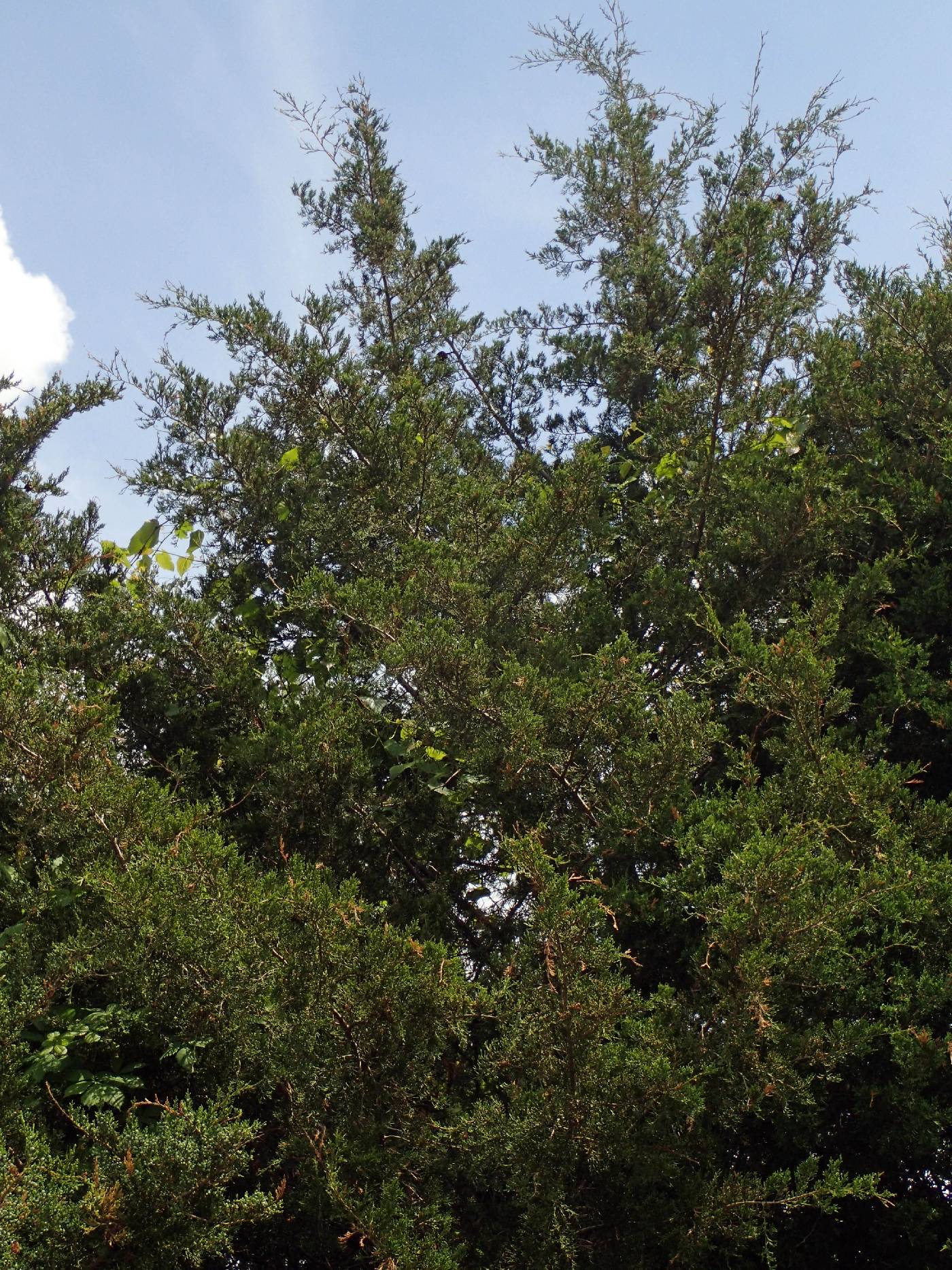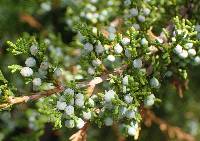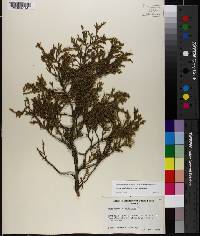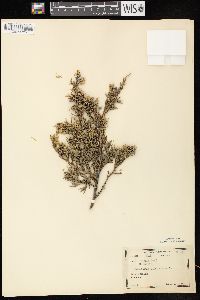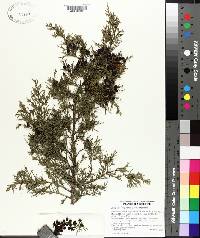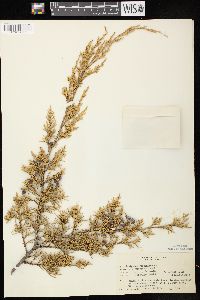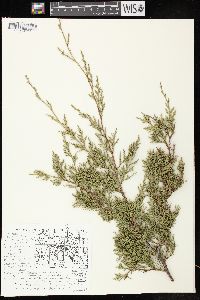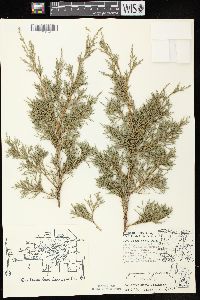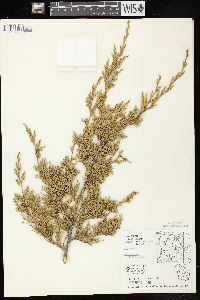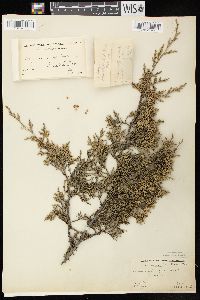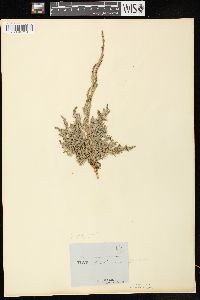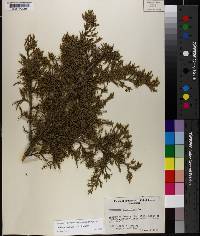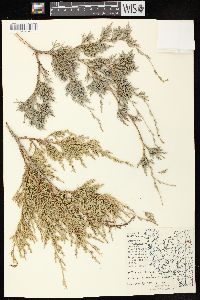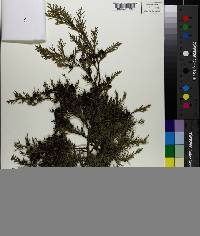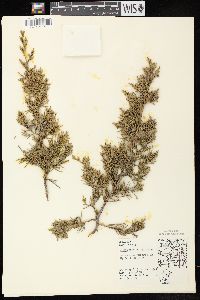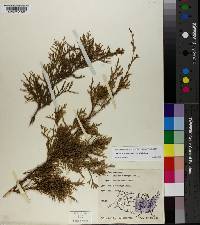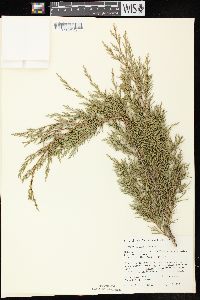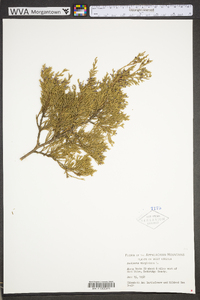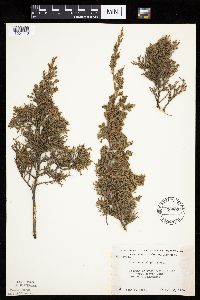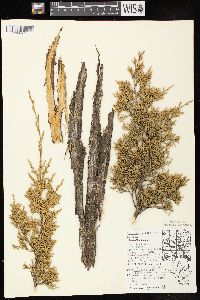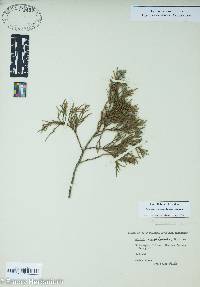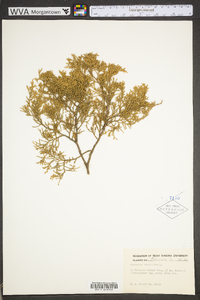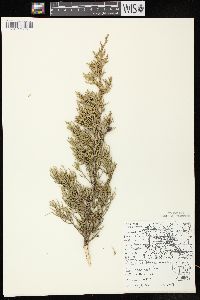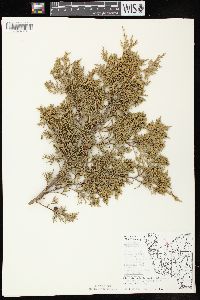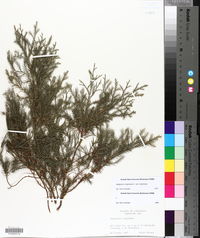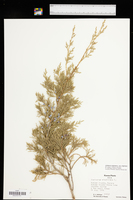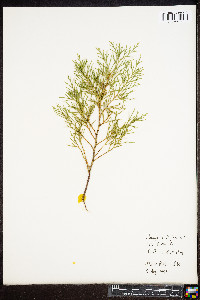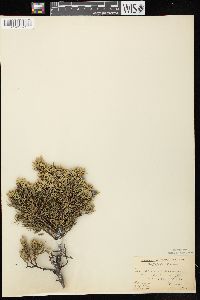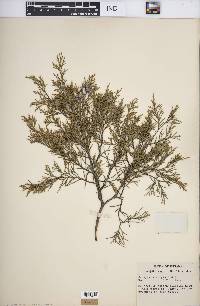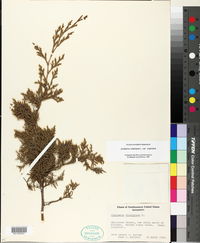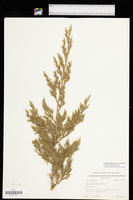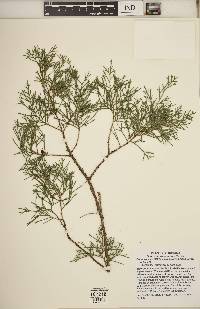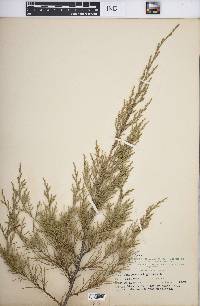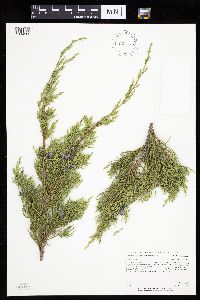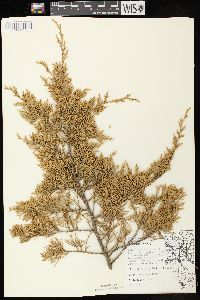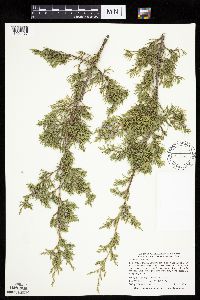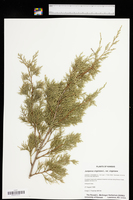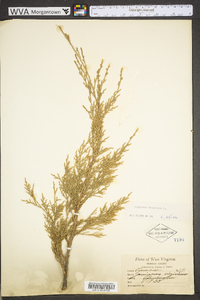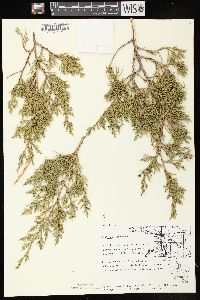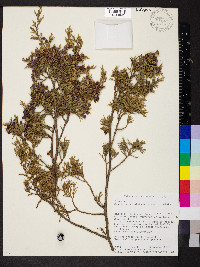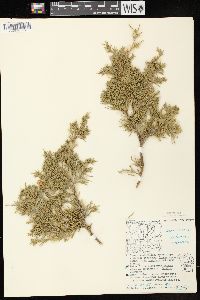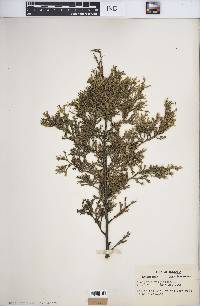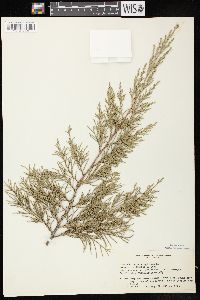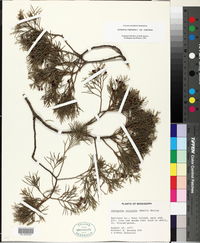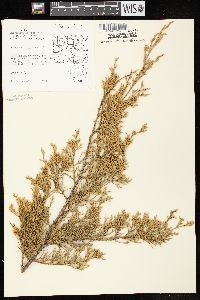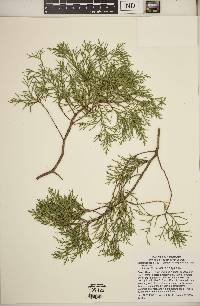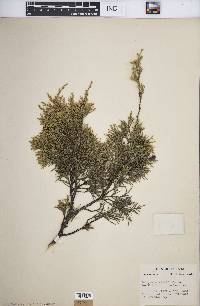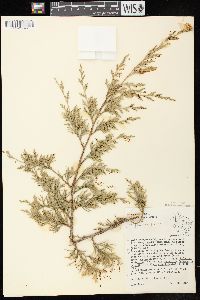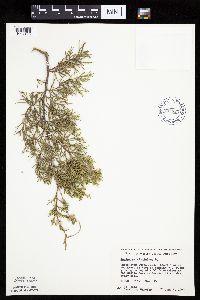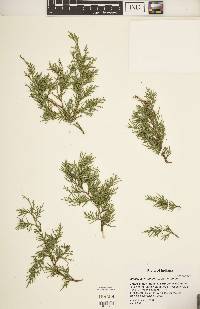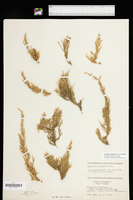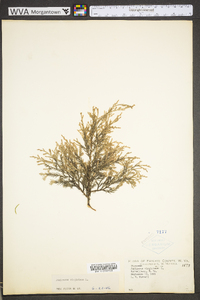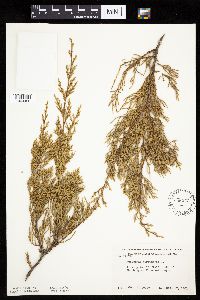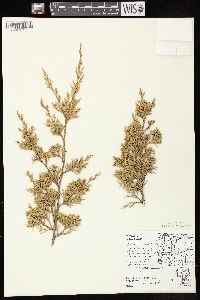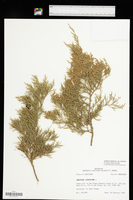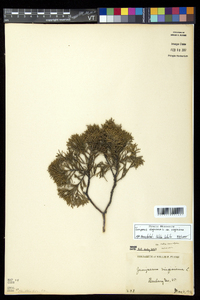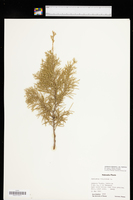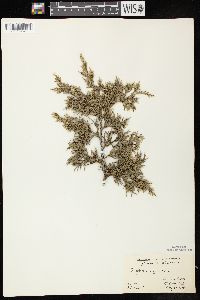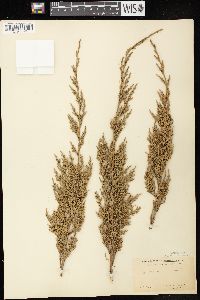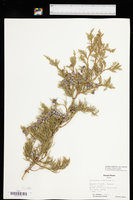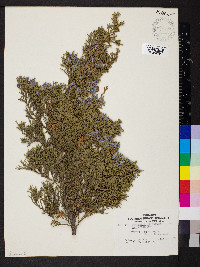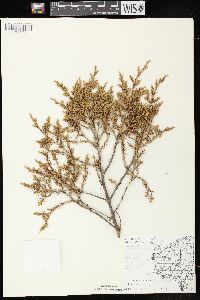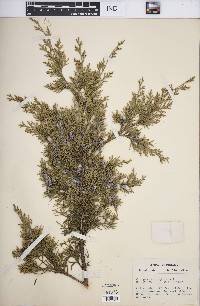Juniperus virginiana var. virginiana
|
|
|
|
Family: Cupressaceae
Eastern Red-Cedar, more...eastern redcedar
|
Trees to 30 m; crown narrowly erect (in young, fast-growing trees) to conic or occasionally round. Bark reddish brown. Branches erect, spreading, or pendulous. Scalelike leaves acute at apex. Pollen cones 3--4 mm. Seed cones globose to ovoid, 4--6(--7) mm. Seeds 2--4 mm. 2 n = 22, 33. Upland to low woods, old fields, glades, fencerows, and river swamps; 0--1400 m; Ont., Que.; Ala., Ark., Conn., Del., D.C., Fla., Ga., Ill., Ind., Iowa, Kans., Ky., La., Maine, Md., Mass., Mich., Minn., Miss., Mo., Nebr., N.H., N.J., N.Y., N.C., Ohio, Okla., Pa., R.I., S.C., S.Dak., Tenn., Tex., Vt., Va., W.Va., Wis. Eastern redcedar hybridizes with the related species Juniperus horizontalis (M. Palma-Otal et al. 1983) and J . scopulorum (C. W. Comer et al. 1982). Reported hybridization with J . ashei has been refuted in subsequent studies (R. P. Adams 1977). The wood of Juniperus virginiana is used for production of eastern redcedarwood oil, fenceposts, and cedar chests.
Tree 10 - 20 m tall Leaves: scale-like or needle-like, green to bluish or yellowish green, persisting for five to six years. Scale-like leaves are common on older trees and are overlapping, 2 - 4 mm long, egg-shaped with pointed to rounded tip and may have glands on the back. Needle-like leaves are common on young trees and quickly growing shoots of older trees and are borne in lose whorls of two to three, often with white lines above, 5 - 7 mm long with a spiny tip. Foliage sometimes turning bronze to yellowish brown in winter. Bark: light reddish brown, peeling in narrow shredded strips. Twigs: bluish green to reddish brown, smooth. Buds: very small, hidden by the leaves. Form: pyramidal to occasionally rounded with a dense crown. Cones: unisexual, with separate pollen and seed cones produced on different plants (dioecious), rarely on the same tree (monoecious), near tips of branches. Pollen cones: 2.5 - 3 mm long, oblong to egg-shaped, with four to six scales, each scale containing four to five spherical yellow pollen sacs. Seed cones: made of thick bluish scales fusing to become nearly spherical and berry-like, borne on short straight stalks near ends of branches, green changing to dark blue with a whitish waxy coating (glaucous), 5 - 7 mm in diameter, maturing in one season, resinous, each containing one or two egg-shaped seeds. Pollination occurs in April. Similar species: Juniperus virginiana also has a more southern variety, Juniperus virginiana var. silicicola, that grows along the southeastern coast of the United States. It has a flat-topped crown, smaller seed cones, and larger pollen cones than our variety. Habitat and ecology: Old dune slopes along Lake Michigan, other dry and sunny dune slopes, along sandstone rocky cliffs, in sloping pastures and along fences. Birds disperse seed from cultivated plants, making escapes quite common. Occurence in the Chicago region: native Notes: Although the common name is eastern red cedar, this species is not a true cedar (Cedrus sp.). The wood of J. virginiana is used to make fence posts, pencils, shingles, and log cabins. A scented oil in the wood is disliked by moths, so the wood is commonly used in closets and clothing chests. Seed cones are used to flavor gin. This species is a host for cedar-apple, -hawthorn, and -quince rust diseases. It hybridizes with J. horizontalis. Etymology: Juniperus is the Latin name for juniper. Virginiana means "from Virginia." Author: The Morton Arboretum From Flora of Indiana (1940) by Charles C. Deam In a recent study of the species Fernald & Griscom found that our spirelike trees of the north and interior are not like the ovoid type of tree of the south. The leaves of adult branchlets of the northern form are narrower and attenuate at the apex while those of the southern form are rather broadly deltoid and obtuse or merely subacute. The mature fruit of the north has sweet flesh and the seed shallow pits at the base while those of the south have flesh with a pitchy taste and deep pits at the base. Caution must be used in separating the two forms by the character of the leaves because of transitional forms. All the specimens I have examined belong to the northern variety. The eastern red cedar is found throughout the state although there are no records from the southwestern part. It is rare to infrequent in the northern part except along the St. Joseph River where it is frequent on its banks or close to them, becoming rare in the central part of the state, and frequent to common in the southern part in the unglaciated area and east of it. This tree seems to prefer calcareous soils, and in the unglaciated area some eroded and abandoned fields have grown up thickly with it. It has a wide range of habitats for I have seen it even in the "flats" in Clark County. I am of the opinion that in the primitive forest this species was restricted to high bluffs and banks of streams and eroded slopes where it could compete with other species. …… Indiana Coefficient of Conservatism: C = 2 Wetland Indicator Status: FACU |

